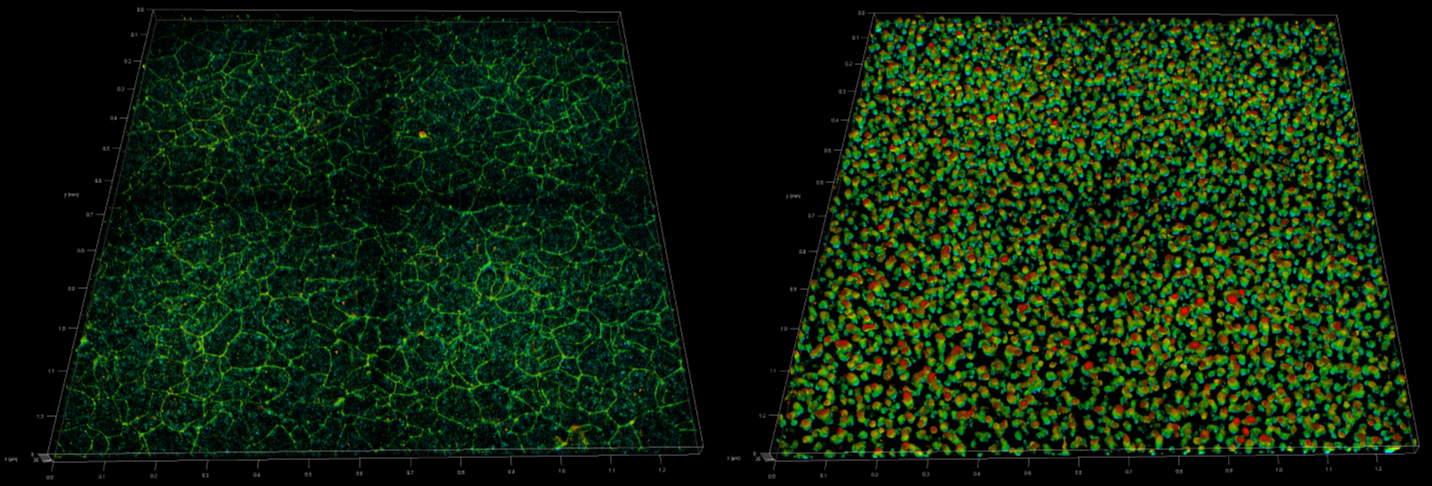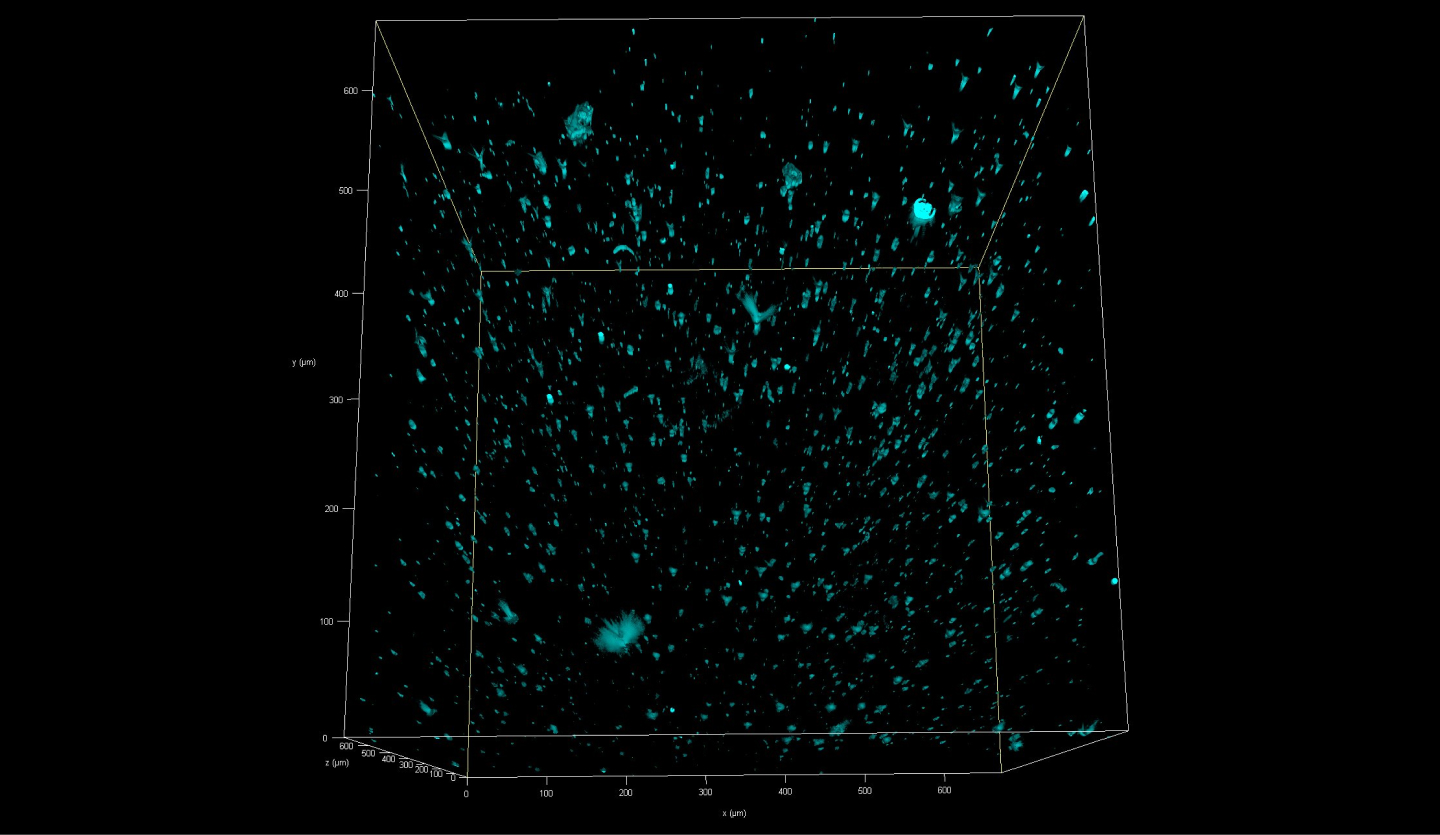
Stained cross section of a human skin tissue model
Our Research
Engineering next-generation human organotypic models of inflammation.
Innovating Human Tissue Models for Inflammation Research
The Tissue Models team is dedicated to developing advanced in vitro systems that provide human-relevant platforms for studying inflammation. By creating comprehensive and physiologically relevant models, we aim to transform how inflammatory diseases are studied.
Current Projects
Advancing Tissue Models for Better Understanding of Skin Inflammation
Our research is dedicated to developing advanced skin equivalents that closely replicate the biology of human skin, particularly in disease states. Active projects are focused on development of immune-competent psoriasis and wound healing models.

3D rendering of tight junctions and nuclei in whole mount human skin equivalent epidermis
Engineering Disease States in a Dish
We take a systematic approach to developing dynamic skin inflammation models, starting with cytokine-induced responses in adult human keratinocytes and fibroblasts. To increase complexity, we incorporate primary immune cells, such as T cells, neutrophils, and macrophages, along with patient-derived lesional cells, to replicate specific disease states. Integration of advanced biosensors will enable real-time monitoring of cell communication and signaling, offering deeper insights into inflammatory processes.

Neutrophils embedded in the dermis of a human skin equivalent
Integration with AI and Machine Learning
In collaboration with AI/ML experts, we are using a data-driven approach in refining our disease induction methods. Machine learning models help us analyze complex datasets, identify key cytokine combinations, and predict cell-cell interactions that drive disease pathology.


